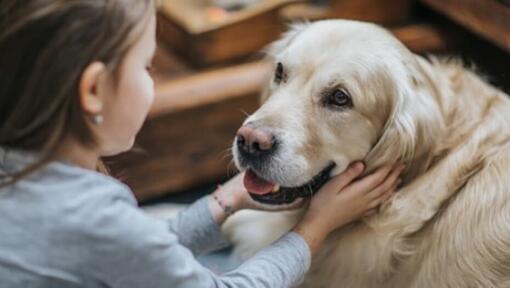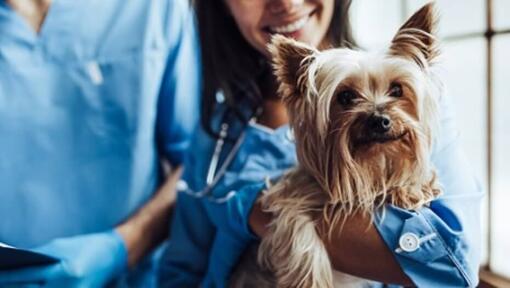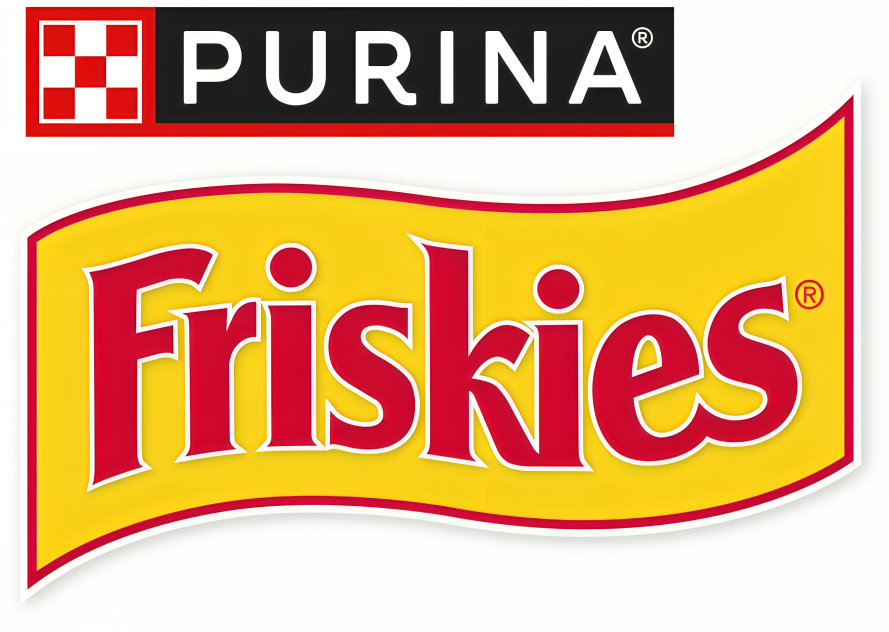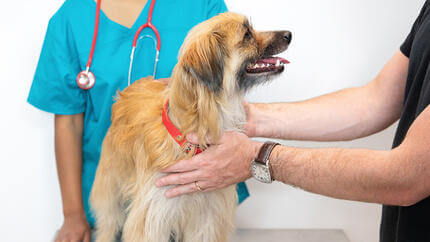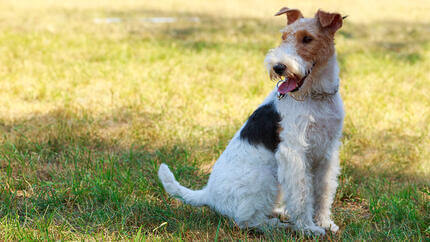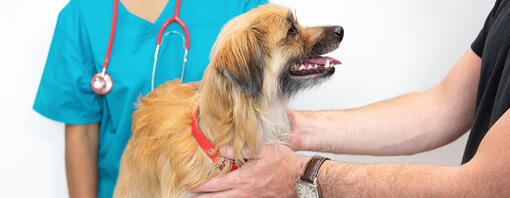
As dogs get older, it can be quite common for them to develop cancer. Over 50% of dogs over 10 will develop it at some point in their lifetime, so it’s important to know the signs and what treatments are available. Find out everything you need to know with our guide.
Just like people, dogs can suffer from cancer, particularly as they get older. According to Pets WebMD, cancer in dogs is actually one of the leading causes of death in dogs aged over 10, with it affecting a significant 50% of those over this age at least some point in their lives.
In part, this is due to our dogs living longer because of improved veterinary and daily care, but unfortunately, old age does bring its own problems. The good news is, usually when caught early, cancer can be very treatable, and knowing what to look out for with the signs of cancer in dogs and understanding when to seek help from your vet can help to catch it early.
Signs of cancer in dogs
When it comes to the signs of cancer in dogs, they can be extremely varied, in part because there are so many different types. It’s almost impossible to make a diagnosis on symptoms alone, but a few of the most common symptoms of dog tumours are as follows:
- Masses, especially those that are growing.
- Lesions that won’t heal, even after treatment.
- Difficulty going to the toilet (urinating and/or defecating).
- Vomiting and/or diarrhoea.
- Loss of appetite and weight loss.
- Struggling to eat or swallow.
- Lethargy and unwillingness to exercise.
- Stiffness or lameness.
- Difficulty breathing.
- A bad smell.
If your dog is displaying any of the above clinical signs, they should be taken to a vet promptly. Even if it’s not cancer, it could still be a sign of a health problem that needs treatment.
Most common types of cancer in dogs
It may surprise you to learn that dogs can actually suffer from many of the same cancers as humans. Some types of cancer are influenced by genetics and are more common in certain breeds, but most can affect just about any breed or size of dog.
Haemangiosarcoma
This type of dog tumour affects the cells that line the endothelial cells. It’s most common in middle-aged to elderly dogs and breeds such as Golden Retrievers and German Shepherds are more predisposed to it.
Lymphoma
Lymphoma is cancer affecting the lymphatic system. It may first be seen in the lymph nodes and it will usually appear as swollen glands under the neck, in front of the shoulders and behind the knee (some of the lymph nodes of the body). It can also affect lymphatic tissue in other areas of the body including the digestive system. This type of cancer in dogs can cause internal swelling and disease, often causing issues with breathing and digestion. Standard Poodles, Golden Retrievers and Australian Shepherds are the most at risk breeds for this type.
Mast cell tumours
Mast cell tumours can develop just about anywhere in your dog’s body, but usually display as a skin lesion. These dog tumours can range in severity from benign to aggressive. Research has also suggested that genetics are at play with this type and that Boxers are the most susceptible.
Melanoma
This type of cancer in dogs affects the skin, typically developing around the eyes, inside the mouth and sometimes around the foot pads. Melanomas come from the pigment-producing cells, and so usually appear as small dark lumps, but they can also be quite large and flat too. If allowed to spread, they can become very difficult to surgically remove so it’s important that it’s caught early.
Osteosarcoma
Osteosarcoma is a type of malignant bone cancer, most commonly found in large or giant dog breeds. The long bones (in the limbs) are particularly affected and the symptoms will generally include stiffness, swelling and pain around the area.
Mammary gland carcinoma
This type of cancer in dogs affects the mammary gland, primarily in female dogs. The good news is that if you get your dog spayed early on, the risk of this cancer developing will be significantly reduced.
Dog cancer diagnosis
Diagnosis cannot be established based on symptoms alone. If you suspect that your dog has cancer, your vet may want to carry out a number of diagnostic tests, including blood tests and imaging X-rays, ultrasound or MRI scans.
These are used both to help determine whether a suspected cancer is present and to establish if it has spread. A biopsy may also be suggested, where a sample of the tumour or an aspirate of cells or tissue is taken and examined to look for cancerous changes.
Treatment of cancer in dogs
Due to the fact that many of the types of cancer in dogs are the same as in humans, the treatments are quite similar too. The type of treatment your vet recommends will depend on the type, how large the dog tumour is, where it is and if it’s spread at all. It’s quite common for your vet to recommend a combination of treatments in order to target the existing tumour and prevent the return of the cancer.
Surgery may be suggested, but this treatment may not be suitable for cancers that have widely spread to other locations. Other common types of treatment include radiation treatment and chemotherapy. It is important to be reassured that chemotherapy is not conducted in the same way as in humans: dogs receive lower doses of chemo toxic medications than a human would do and this aims to minimise unwanted side-effects which could otherwise reduce their quality of life, including sickness and nausea. Hair loss, as seen in many humans undergoing chemotherapy, is also not a common side-effect.
In addition to treating the cancer itself, your vet may recommend treatments to minimise the impacts of the disease on your dogs. For example, if your dog has lost a lot of weight, a higher energy diet might be recommended. If they are in discomfort or pain then your vet is likely to be able to give pain-relief medications to help with this.
If you suspect that your dog has a tumour, catching it early is key in giving your dog the best chance of making a full recovery. Always make sure that you take your dog for regular vet check-ups so that they can keep an eye out for any potential signs of cancer in dogs.

